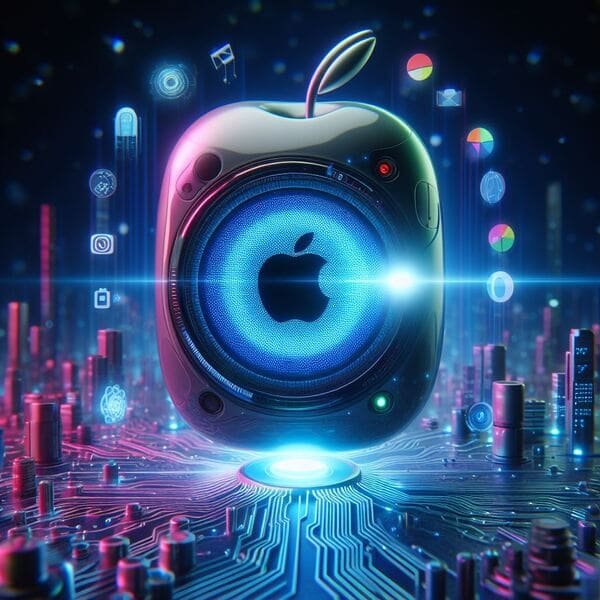
Apple’s reputation isn’t exactly built on open-source software. But lately, they’ve been making waves in the AI world by sharing their cutting-edge research. Let’s dive into 5 fascinating facts about Apple open-source AI models that hint at the future of intelligent tech.
You might like: Top 5 AI companies in the world
1. Multimodal Magic
Imagine asking Siri, ‘What kind of flower is in this picture?’ and getting the right answer, even if you don’t know the flower’s name. That’s what Apple’s Ferret model can do. It’s a multimodal AI, which means it can understand both pictures and words at the same time.
Most AI models usually focus on one type of data, like text or images. But the world around us has a mix of different kinds of information. Multimodal learning lets AI work with both text and images. Ferret, for instance, can analyze a photo you took and then use its text skills to look through image databases to find out what flower is in your photo. This makes it possible to create smarter search tools, smarter virtual assistants, and easier ways to interact with technology.
2. Open Source Surprise
Apple usually keeps its technology pretty closed off. That’s why it’s a big deal that they’ve decided to make these AI models open-source. It means that the code for Ferret and other models is out there for anyone to use, change, and make better.
There are a few benefits to this open approach. First, it lets researchers and developers worldwide work together and build on Apple’s work. No single team can explore all the uses for a complex AI model, but by opening it up, Apple is creating a global AI community that can speed up innovation.
Second, open-source encourages transparency and trust. Anyone can look at how these models operate, which makes it easier to find biases or flaws. This openness is key for creating ethical and responsible AI systems.
3. Efficiency Champion
Training AI models usually takes a ton of data, which can be costly and take a lot of time to gather. That’s where Apple’s OpenELM models (Open-source Efficient Language Models) come in. These models perform about the same as other big language models but need much less data.
Imagine it like this: typically, you’d need a huge library of books to train a language model. OpenELM models can learn just as well from a smaller collection, like a carefully chosen set of important texts. This efficiency has a few perks. It speeds up development because you don’t spend as much time gathering and processing data. Plus, it might reduce the environmental impact of AI training, which can use a lot of computing power.

4. Beyond Siri
These Apple open-source AI models might be the key to making Apple products even smarter. Think about Spotlight search, which usually finds text. With these models, it could also understand what’s in your photos. You could type ‘flowers from my hike,’ and it would show you the right pictures, even if you haven’t labeled them.
Siri, Apple’s virtual assistant, could get a big boost too. With Apple Open-Source AI models, Siri could have more complex conversations that consider what’s in a picture. Imagine asking, ‘What restaurants are near this landmark?’ while showing Siri a photo you just took. This could mean that future Apple devices seamlessly understand both text and images, all thanks to these open-source AI models.
5. Building Blocks for the Future
Apple’s move to open-source AI shows they’re serious about being a leader in artificial intelligence. By sharing their research, they’re not just advancing the technology themselves they’re also encouraging a spirit of collaboration in the AI community.
This teamwork could lead to amazing breakthroughs that shape the future of smart machines. Now, researchers and developers from around the world can join forces to make Apple’s models even better. This kind of group effort could speed up the development of safe, ethical, and powerful AI that benefits everyone.
Conclusion
These are just a taste of the exciting possibilities that Apple open-source AI models hold. With continued innovation and collaboration, we might be witnessing the building blocks of a future filled with smarter, more helpful technology.



